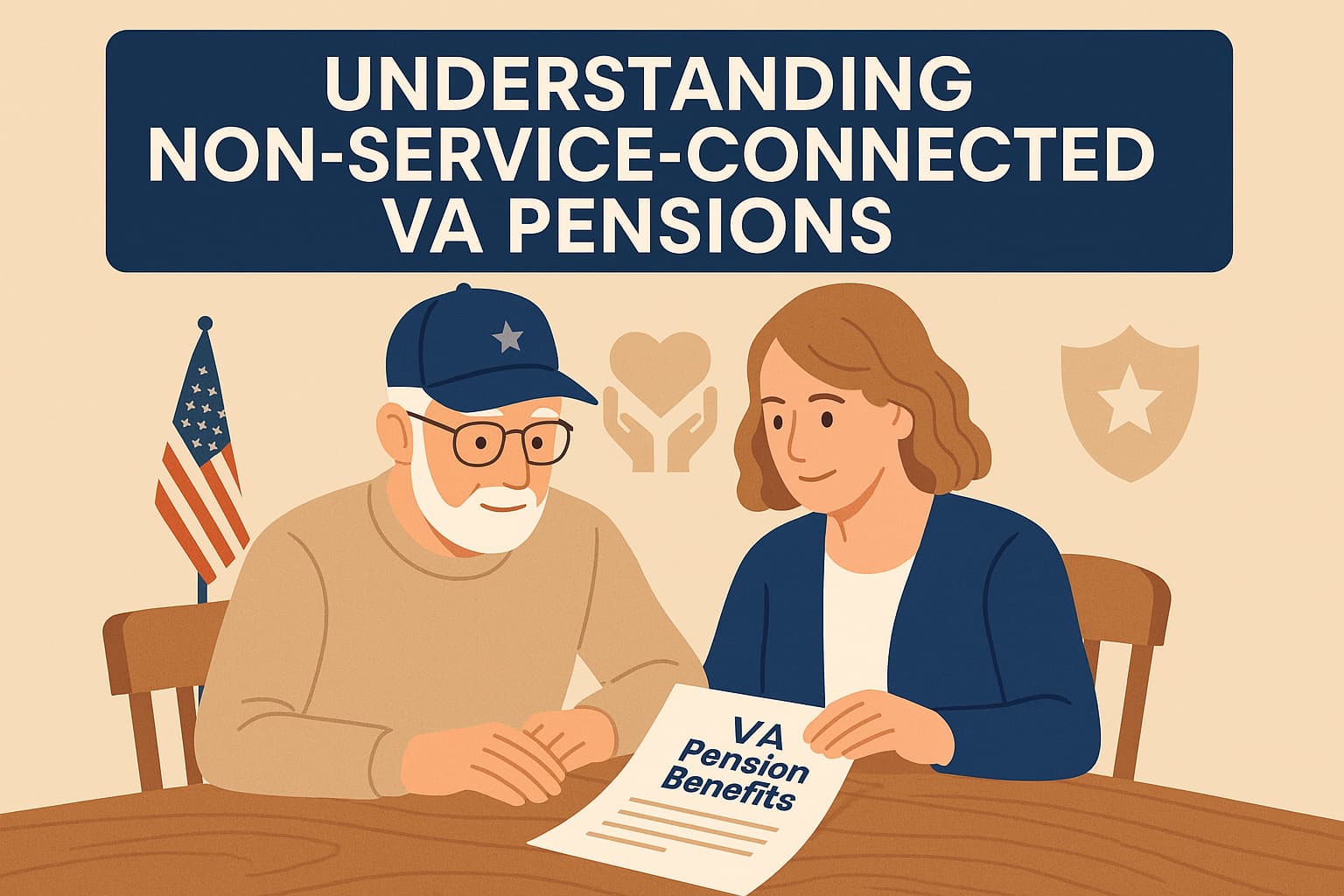For many wartime veterans, financial support in later years or during times of disability is a critical concern. The Non-Service Connected VA Pension offers a lifeline, providing tax-free monthly payments to eligible veterans who didn’t develop disabilities due to their military service but still face economic challenges. This comprehensive guide will walk you through what this pension is, who qualifies, how to apply, and how additional benefits like Aid and Attendance can make a difference. Whether you’re a veteran or a family member exploring options, understanding this benefit could be the key to securing deserved support.
What is the Non-Service Connected VA Pension?
Unlike service-connected disability compensation, which ties benefits to injuries or illnesses from military service, the Non-Service Connected VA Pension is a needs-based program. It’s designed for wartime veterans with limited income who are either 65 or older or have a permanent and total disability unrelated to their service. Administered by the Department of Veterans Affairs (VA), this pension ensures financial stability for those who served during wartime, even if their current challenges aren’t service-related. Payments vary based on income, dependents, and additional needs, with the VA adjusting amounts annually to reflect financial circumstances.
Who Qualifies? Breaking Down Eligibility
| Criteria | Details |
|---|---|
| Military Service | At least 90 days of active duty, with one day during a wartime period (e.g., WWII, Korea, Vietnam, Gulf War). Discharge must be under conditions other than dishonorable. For veterans entering service after September 7, 1980, typically 24 months or the full period ordered is required, with exceptions. |
| Age or Disability | Must be 65 or older, OR have a permanent and total non-service-connected disability (an illness or injury preventing work and unlikely to improve). |
| Income and Net Worth | 2025 net worth limit is $159,240 (excluding primary home, car, and most furnishings). Income must fall below the Maximum Annual Pension Rate (MAPR), adjusted for dependents and unreimbursed medical expenses. |
Eligibility for the Non-Service Connected VA Pension hinges on three main pillars: military service, age or disability, and financial need. Here’s what you need to know:
For example, a single veteran with no dependents in 2025 has an MAPR of around $16,037 annually. If your income exceeds this, medical expenses can offset the difference, potentially qualifying you. The VA considers all income sources, including Social Security, and net worth includes your spouse’s assets if married.
How to Apply: A Step-by-Step Guide
Applying for the Non-Service Connected VA Pension can feel daunting, but breaking it down into steps simplifies the process:
-
Check Eligibility: Use the criteria above to confirm you qualify. Unsure? The VA or a professional can help clarify.
-
Gather Documents: You’ll need proof of service (DD Form 214), evidence of age or disability (e.g., medical records for those under 65), and detailed financial records (income, assets, expenses).
-
Submit Your Application: Complete VA Form 21-526EZ, available online at VA.gov, by mail, or in person at a VA office. Additional forms may be needed for disability claims or medical expenses.
-
Follow Up: Processing can take months, so track your application and respond to any VA requests promptly. The complexity of forms and income calculations often trips up applicants. That’s where expert help can shine—consider consulting an accredited VA representative to ensure accuracy and speed up approval. At VetBenefitsPro.com, our team offers personalized assistance to navigate this process, potentially for a fee, making sure your application stands the best chance of success.
Boosting Benefits: Aid and Attendance or Housebound Allowances
Beyond the basic pension, two additional benefits can increase your monthly payments:
● Aid and Attendance (A&A): For veterans needing help with daily activities like bathing, dressing, or eating due to disability. This also applies if you’re bedridden, in a nursing home, or have severely limited vision (5/200 or less in both eyes). A&A can significantly boost your pension—for instance, raising the 2025 MAPR for a single veteran from $16,037 to $26,766 annually.
● Housebound: For those with a permanent disability confining them to their home most of the time. This increases the MAPR to $19,598 for a single veteran in 2025. To claim these, you’ll need medical evidence, often via a doctor’s statement, submitted with your pension application. These enhancements reflect the VA’s commitment to supporting veterans with greater needs.
Participate in Employer-Sponsored Retirement Plans
Here are answers to frequent concerns veterans raise:
● Can I get both this pension and service-connected compensation? No, the VA pays the higher of the two benefits, not both together.
● Does Social Security affect my pension? Yes, it’s counted as income, reducing your pension amount, but unreimbursed medical expenses can offset this. Conversely, the pension may lower Supplemental Security Income (SSI) but not Social Security Disability Insurance (SSDI).
● What if my income changes? Since this is a needs-based benefit, any income increase (e.g., a new job or inheritance) can lower your payment. The VA recalculates annually, so report changes promptly.
Why It Matters: A Financial Lifeline
The Non-Service Connected VA Pension isn’t just a payment—it’s recognition of your service and a tool to ease financial strain. An interesting twist? Payments adjust with income changes, ensuring support matches your current situation. This flexibility can be a surprise but highlights the pension’s role as a dynamic safety net.
Get Started with Expert Help
Ready to explore your eligibility or need assistance with the application? The process can be complex, but you don’t have to go it alone. Visit VetBenefitsPro.com to connect with our Independent Accredited VA Representatives. We’re here to guide you through every form and question, ensuring you maximize your benefits. Contact us today for a consultation—your service deserves this support.


